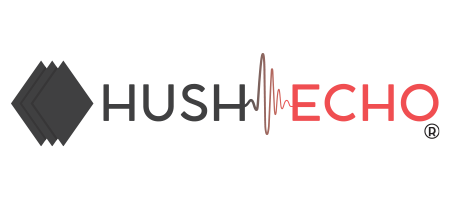What Are Echo and Reverb?
As you stumble through searching for sound proofing solutions, you probably find yourself neck-deep in terminology that doesn’t always make sense. You know you need to install some form of soundproofing panels in your home office, and you know that it is going to help with echo and reverb, but what exactly are echo and reverb?
Well, we are going to break it down for you.
Echo and Reverb
With terminology just being thrown around, it can be overwhelming when you don’t understand what it means. So, we are going to explain each term in comparison to each other.
What is an echo? An echo can be heard when a sound is reflected back at the source after bouncing off a hard surface. The same sound is often heard twice, but sometimes it is heard multiple times, losing power or volume with each echo as the sound wave loses energy. This makes each subsequent reflection weaker or softer than the original sound.
For example, if you go into a cave and you shout ‘hello’ at the top of your lungs, you will hear your voice distinctly coming back to you saying ‘hello,’ just a little bit softer in volume. It is generally expected that an echo will return to the source after about a 50 ms break. This is a good way of knowing if what you are hearing is an echo with the distinct break between the original sound and the returned sound.
What is reverb? Reverberation occurs when a sound continues long after the original sound has stopped. Reverb also occurs as a result of reflection but there are a large number of reflected waves that the brain perceives as a continuous sound.
For example, when you go into a big empty space such as an empty hall, or even an empty room and you say ‘hello,’ you don’t distinctly hear your voice returning to you, but instead you hear something that sounds like ‘hellooooo.’
This continued sound is reverb and it can be quite distracting, which can lead to impaired productivity and concentration. Understanding what is sound is also an important concept in treatment identification.
How Do You Fix This?
Having echo and reverb in your space basically means that the sound is not optimal. If sound quality is as high stakes for you as it is for a producer in a recording studio or streaming/podcasting room, you’re going to need to know how to carry out optimal and superior acoustic treatment in your space.
The best way to treat these sound anomalies is through the use of acoustic foam. For echo and reverb, you’d want to treat the problem at the source. And the source is actually flat surfaces that reflect sound. By using acoustic panels, the foam absorbs all reverb and echo leaving only crisp and clear sounds.
By sound waves being absorbed instead of being reflected, the energy within the sound wave is absorbed rather than reflected until the wave runs out of energy.
So, if you’re looking to get that pesky echo and reverb removed from your home office, your studio, or your game room, choose from a wide selection of Hush Echo’s acoustic foam panels. They are DIY, easy to install, and they suit any space creating an aesthetically pleasing final product.